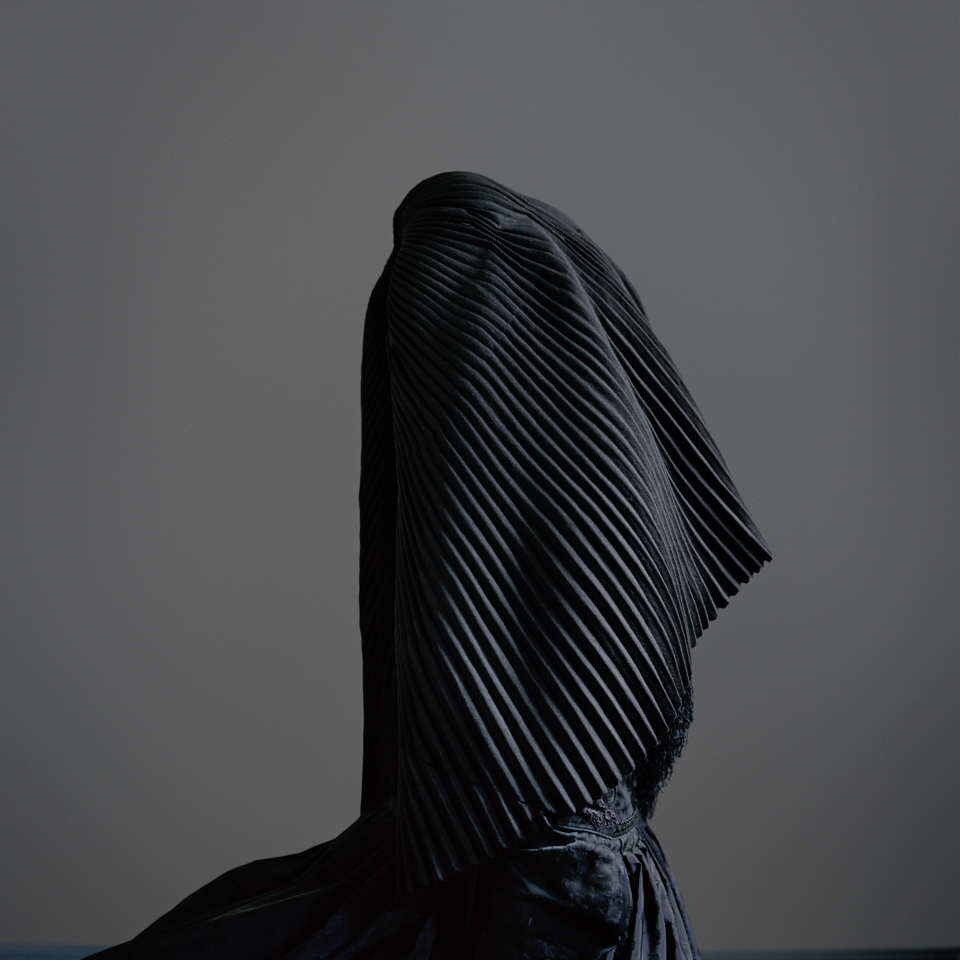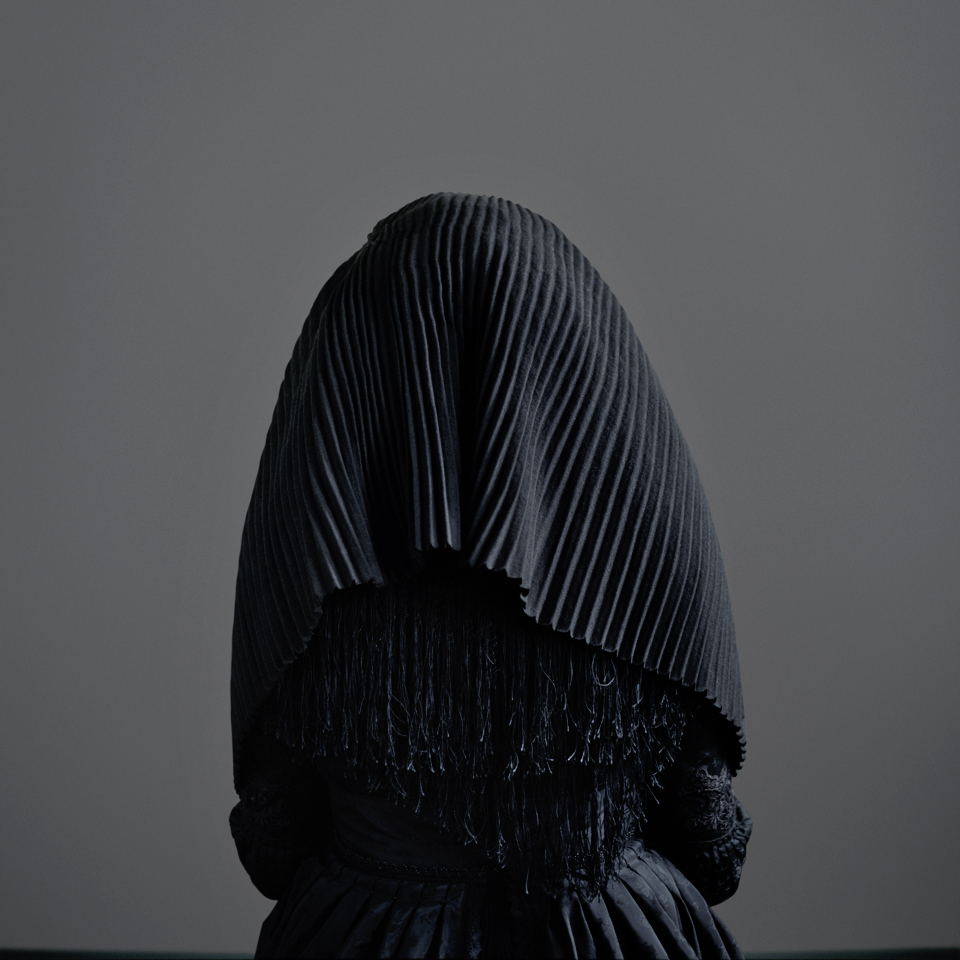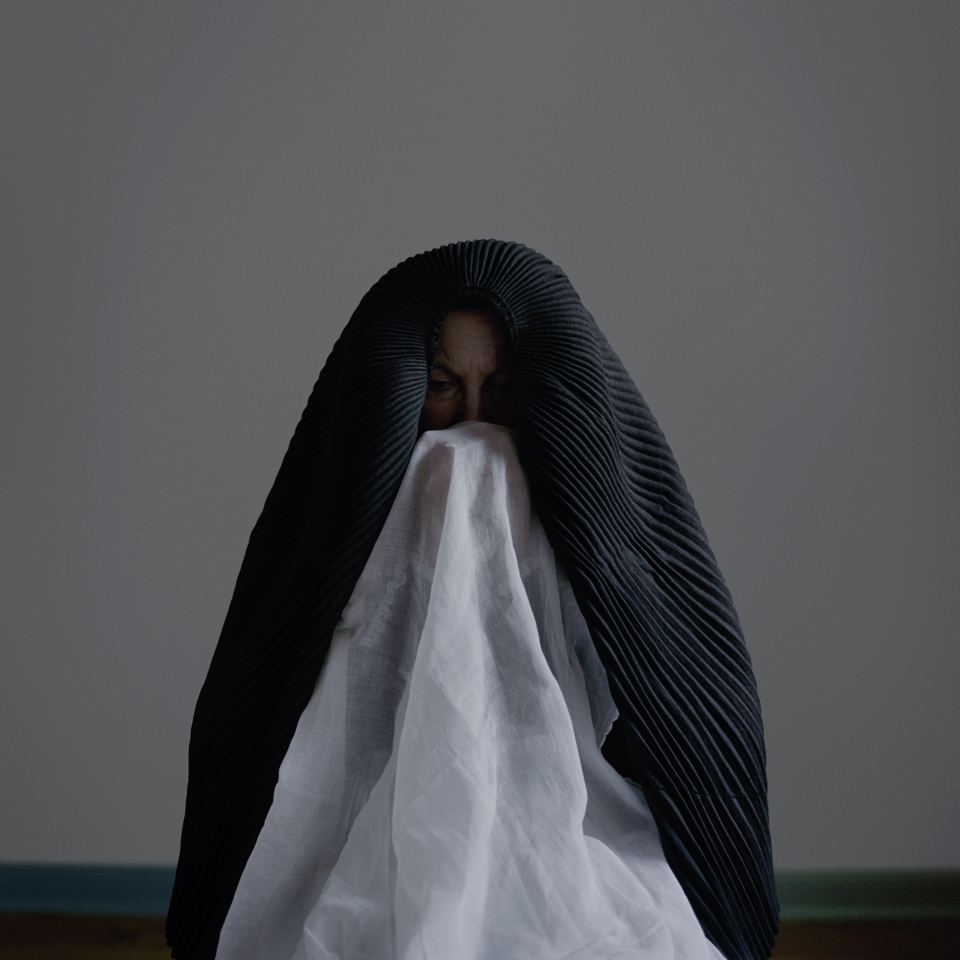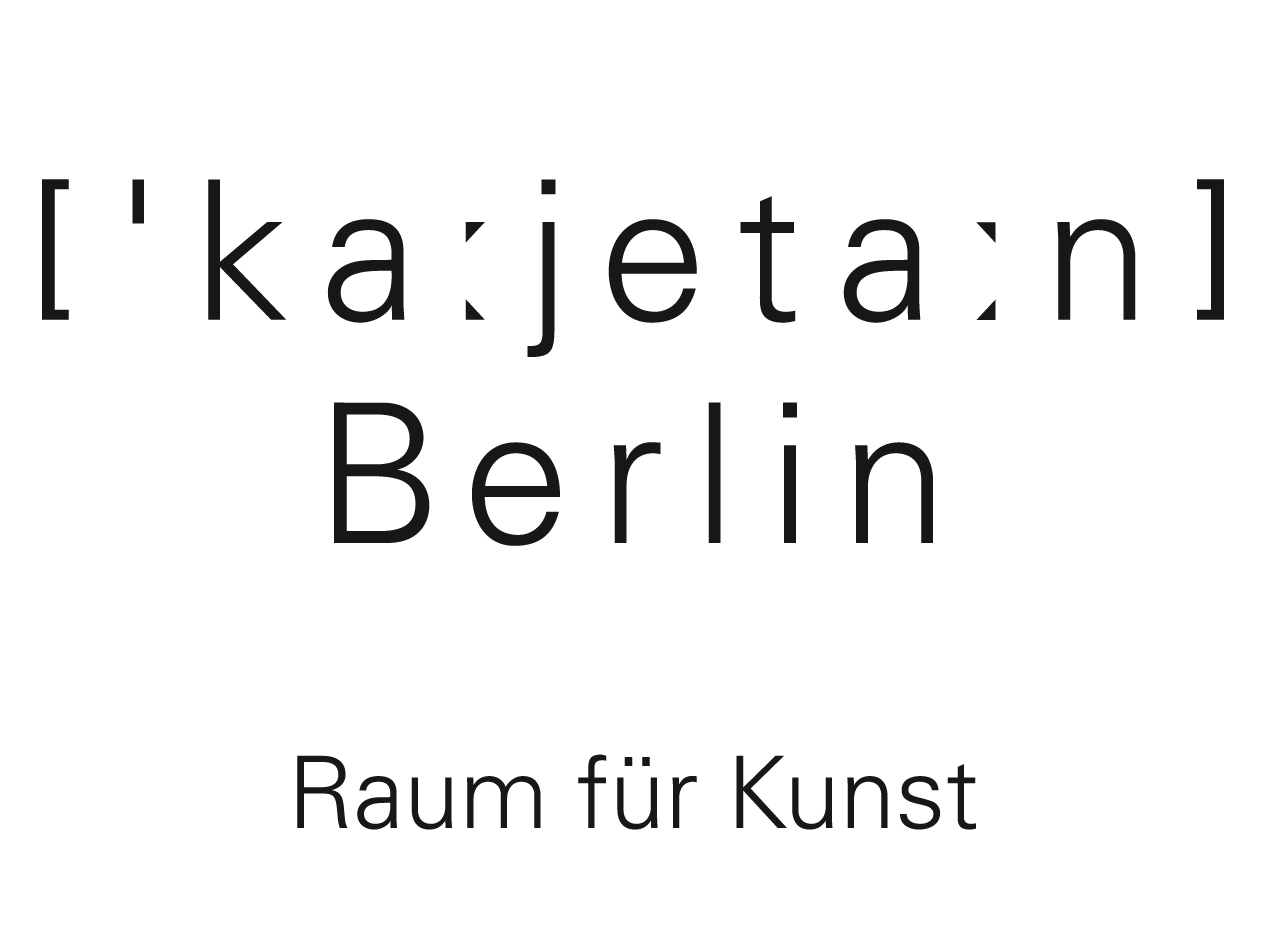
Blank reflections
By Camilla Jalving
“Ever tried it? You meet someone you think you know, but they don’t recognize you?” – Trine Søndergaard asks one day when we meet at her studio to talk about her latest work series. “Yes,” I reply. Yes, for who hasn’t tried it? We continue along the same lines: when it happens, it’s as if you’re invisible, as if you’re no one. Recognition is acknowledgement that you are in the world. It’s quite banal. I see you. You see me. And that way we become someone in each other’s gaze. But sometimes it just isn’t there. That gaze. Sometimes the world doesn’t look back at you. Or so it can feel.
That’s one way to begin pinning down Trine Søndergaard’s latest photographs. In everyday experience and personal confession. Another way, of course, is to go to the works themselves: the photographs of women in veils and other mourning apparel. Of mirrors. Of women hidden by mirrors. Of the furrows in a winter-barren field. Of a face that may see, but looks inside itself.
“Everyone carries a room inside,” writes Franz Kafka in his diary.[1] It is Trine Søndergaard who mentions the quotation as we sit talking in her studio. This inside room is a mental space, a private space that contains what is not shared, what can hardly be thought, articulated, shown or uttered word for word. This assertion of private space is in many ways typical of Søndergaard’s practice, as it hangs there on the walls around us, and as it appears in book after book and exhibition after exhibition. With precision and bated breath it revolves around what exists, but what cannot be shown. It is a visual world full of subjects that invoke a kind of invisibility, as they turn away or refuse to reveal all. They may show themselves, yet they refuse to be seen.
Take the motif of the young woman who holds a mirror up in front of her face. The mirror is angled towards the camera precisely so that its blank surface, instead of reflecting the world, becomes a dead zone. Becomes a gap in representation that shows without showing. Shows that there is nothing to see – nothing but this absence. Or as the Dutch theorist of culture Mieke Bal has written about Søndergaard’s works: “We are confronted with a visual presentation of invisibility – of the figure supposedly temporally or spatially near the image, or in it but turning away”.[2] On the one hand this rupturing of representation – this hollowing-out of the subject – is a photographic device that points back to Surrealism’s play with pictorial codes as in a Man Ray or a Magritte. On the other hand it constitutes nothing less than an existential abyss, inasmuch as visibility and being can be said to belong together – I write, as I log on to my Facebook profile, update my status and change my profile. A Facebook friend ‘likes’ it. I am seen. If one keeps up with Facebook, Instagram, Snapchat, Twitter and the imperative of visibility on which all these media are based, then invisibility is equivalent to death. Black earth, as in Søndergaard’s large photographs of the bare field. Pure materiality. Wet, heavy earth. No getting away from it. This is where it all begins and it all ends. “Earth to earth”…. You know how it goes. Heavy matters. You can go along with this logic and see the blank mirror as the cessation of life, the erasure of identity. Or you can go against it and ask whether there is a possible criticism in remaining invisible, in remaining unmarked?
Unmarked is a book by the American performance theorist Peggy Phelan. It is from 1992 and has long since become a classic in performance studies, but is nevertheless still relevant. It is about performance and documentation, but also about the relationship between visibility and power. Or rather the power of remaining invisible within a culture of visibility. “Visibility is a trap,” Phelan writes with a reference to a quotation from Jacques Lacan: “it summons surveillance and the law, it provokes voyeurism, fetishism, the colonial/imperial appetite for possession”.[3] There is therefore a power in avoiding the trap of visibility and remaining ‘unmarked’ within a culture that equates visibility with power. Phelan argues for “active disappearance” as a kind of oppositional strategy, and thus writes her way up against the standard politics of representation, which equates power and visibility, since in the name of visibility it participates in a stereotyped categorization. In this perspective, the ‘unmarked’ can be a place from which the subject can speak without being spoken in advance, without being categorized, evaluated, type-cast or ‘personalized’. We know who you are before you know it yourself, is the logic of the Internet today, when everyone is ‘that sort of person’, understood as an algorithmic function of searches, sharings, likes and consumption. In that economy, the ‘unmarked’ is a place from which the subject can resist the trading of visibility for identity that is built into the logic: “If you let us see you, we will tell you who you are”. A blank mirror for the face. A screen between the self and the world. A mirror shining in a forest landscape, a blind spot that breaks through the picture surface and sends the gaze back.
“She wears her heart on her sleeve,” is something we say about a person who is particularly sensitive or whose emotions are particularly readable. For the most part we keep them up our sleeves, these emotions. Away from the gaze of others. In Trine Søndergaard’s photographs, however, the emotions are given a kind of visibility, in the form of a sculpturally pleated mourning dress whose precise folds transform the still-living into a living monument to death. And this in the form of black mourning veils that cover winter-pale faces with a delicate filigree. These mourning costumes are of great cultural interest in their own right. The veils are in French mourning lace from the 1700s and 1800s. Back then the veils were a great luxury. They were expensive, because they required great craftsmanship and hours of meticulous handwork. In Trine Søndergaard’s photographs the lace is worn by young women. As in the artist’s other photo projects such as Strude, Interiors and Guldnakke, Søndergaard also confronts present and past in one and the same picture.
Most of all, though, they seem beyond time and place. This is to be understood in several ways. On the one hand the photographs appear ‘timeless’, understood as ‘slow’, which may seem a paradoxical statement, since it is only a matter of hundredths of seconds captured on rolls of film. Yet it is as if time has come to a standstill in the photographs. As if it is frozen by poses and lighting. As if it is bracketed. Time is not important here. What is important is that which transcends the moment. Trine Søndergaard is able to make the photograph a slow medium, closer to painting than the casual snapshot we all take again and again to fill out the gaps in our memory.
On the other hand the photographs appear ‘placeless’, understood as without any clear context. It is not only time that is negated here – it is also space. We are nowhere, and thus everywhere. Although the photographs to some extent fulfil a documentary function in relation to a relatively unfamiliar part of Danish cultural history, for all that they also point far beyond this framework. They do so for two of the reasons mentioned, but also for a third. Compared with the documentary function the women are simply too averted, too introverted – more dead than alive – and their insistent absence is too striking in terms of a photographic tradition that intends to ‘show’. Instead of objective registration of the history of costume, Trine Søndergaard’s photographs become metaphors and images of grief, and the mourning veil becomes a membrane between the women and the world which both shows and conceals, both reveals and screens. In short, they become image formations that operate sophisticatedly, discreetly – underplayed and searching in the field between visibility and invisibility, the space outside and the space inside.
[1] Franz Kafka, The Blue Octavo Notebook (ed. Max Brod), Exact Change, 2004.
[2] Mieke Bal, “Stasis, How to See”, in Trine Søndergaard, Stasis, Ostfildern: Hatje Cantz, 2014, 16.
[3] Peggy Phelan, Unmarked: The Politics of Performance, London & New York: Routledge, 6.

Trine Søndergaard *1972, lebt und arbeitet / lives and works in Kopenhagen, Dk, 2000 Albert Renger-Patzsch-Preis, Fotografische Sammlung Museum Folkwang Essen
Ausstellungen / Exhibitions (Auswahl / Selection):
Göteborgs Konstmuseum (Solo, 2020), Musée d’Art Moderne André Malraux, Le Havre (Solo, 2018); Bruce Silverstein Gallery, New York (Solo, 2018, 2010); Brandts 13, Odense (Solo, 2017); Martin Asbæk Gallery, Copenhagen (Solo, 2015, 2012); Kunsthal Nord, Aalborg (Solo, 2013); Bruce Silverstein Gallery, New York (2013); Ffotogallery, Cardiff (Solo, 2013); Hagedorn Foundation Gallery, Atlanta (Solo, 2013); Museum Kunst der Westküste, Alkersum/Föhr (Solo, 2012); Nasjonalgalleriet, Oslo (2011); ARoS, Aarhus (2010); Ny Carlsberg Glyptotek, Copenhagen (Solo, 2010)

